International Journal of Scientific & Engineering Research, Volume 5, Issue 4, April-2014 755
ISSN 2229-5518
AFIM: A High Level Conceptual ATM Design
Using Composite Formal Modelling
With Capture Simulation Pattern Matching
Technique
1Okafor K .C, 2Udeze C.C, 3Ugwoke F.N, 4Obinna Ifesinachi 5Okwuelu Nnaemeka
1,2,5
Electronics Development Institute, Awka, Nigeria,
3
Computer Science, Michael Okpara University Umuahia, Nigeria,
4
Electronic and Computer Engineering, Nnamdi Azikiwe University Awka,
1
2
3
![]()
Abstract—This paper is an extention of our ealier work on enhanced technique in ATM risk reduction using Atomated Biometric Fingerprint in Nigeria. A conceptual model of an Automated Fingerprint Identification Machine (AFIM) is presented as an engineering solution to detailed AFIM designs for financial transactions. We present detailed Data Flow Diagrams (DFDs) and description algorithms as a Formal Modelling Framework (FMF). Our framework is a part of an ongoing research in improved Automated Teller Machines leveraging biometric fingerprint and cryptographic schemes. In this work, a pattern matching frame for an input image set at 0.99% threshold was realized with MATLAB Simulink for identification and verification purposes of the AFIM internal logic. Future work will show our GUI implementation results leveraging Software Development level Cycle activities.
Keywords: Algorithms, ATM, Conceptual, Cryptography, Fingerprint, Framework, Modelling, Transaction
N Automated Teller Machine (ATM) is a computerized telecommunications device that enables the clients of any financial institution to perform financial transactions like deposits, transfers, balance enquiries, mini statement, with- drawal and fast cash etc., without the need for a cashier, human clerk or bank teller [1]. There are two types of ATMs: first, it is a simple ATM used only for cash withdrawal and to receive a report on accounts balance and second one is a complex unit, which is used for deposits and money transfer [1]. The former is
the most frequently used in most countries of the world.
Fig.1: Conventional ATM model
On most modern ATM designs, the customer is identified by inserting a plastic ATM card with a magnetic stripe or a plastic smart card with a chip that contains a unique card number and some security information such as an expiration date. In this case, authentication is provided by the customer entering a personal identification number (PIN). Using this type of ATM model, customers can access their bank accounts in order to make cash withdrawals, debit card cash advances, and check their account balances as well
as purchase prepaid cell phone credit. The choice of ATM sys- tem determines the type of encryption modeling on the com- plete system.
The existing work in [2] focuses on Data Encryption Stand- ard and Advanced Encryption Standard as the encryption standards used by the banks to protect the data and for secure data transmission. The work in [3] focused on ATM biometrics leveraging use case diagrams, activity diagrams with V.B.net implementation. The paper in [4] proposed a framework for credit cloning.
The authors in [5] proposed a method to improve the secu- rity Level of ATM Banking Systems Using AES Algorithm by introducing Encrypting PIN Pad (EPP) as shown in Fig. 2. The authors in [6], formulated a suitable simulation technique which will reduce idle time of servers and waiting time of cus- tomers for any bank having ATM facility, and argued that the technique will be helpful for any bank at global level for im- proving their customer’s service towards competitive ad- vantage. Fig. 2 shows a typical ATM with its Encrypting PIN Pad (EPP).

Fig.2.1: An ATM setup with EPP [5]
IJSER © 2014 http://www.ijser.org
International Journal of Scientific & Engineering Research, Volume 5, Issue 4, April-2014 756
ISSN 2229-5518
This paper observes that regardless of the cryptographic or biometric design of an ATM system, the role of formal model- ling for such designs will reveal the engineering ingenuity more accurately. We now discuss on formal method philoso- phy as well as our contribution in this work.
In software engineering, formal methods are a particular kind of mathematically based techniques for the specification, de-
veloment and verification of software and hardware systems [7]. The use of formal methods for software and hardware design is motivated by the expectation that, as in other engi- neering disciplines, performing appropriate mathematical analysis can contribute to the reliability and robustness of a design [8]. Formal methods are best described as the applica- tion of a fairly broad variety of theoretical computer sci- ence fundamentals, in particular logic calculi, formal lan- guages, automata theory, and program semantics, but al- so type systems and algebraic data types to problems in soft- ware [9]
According to [10] a real-time control system, the ATM sys- tem is characterized by its high degree of complexity, intricate interactions with hardware devices and users, and necessary requirements for domain knowledge. There is no systematic and detailed documentation of design knowledge including the modeling prototypes of ATM systems. Hence the role of denotation mathematics and formal notation systems will suf- fice. The author in [10] presented the formal design, specifica- tion, and modeling of the ATM system using a denotational mathematics known as Real-Time Process Algebra (RTPA). In this case, the RTPA used process relations to describe software system architectures as well as its behaviours with a stepwise refinement methodology. According to the RTPA methodolo- gy for system modeling and refinement, a software system can be specified as a set of architectural and operational compo- nents as well as their interactions. The use of Unified Data Models (UDMs), also known as the component logical model (CLM)) which is an abstract model of system hardware inter- faces, an internal logic model of hardware, and/or an internal control structure of the system could be leveraged. Also, the use of unified process model for modelling static and dynamic processes is vital in this regard.
We present a basis for developing an ATM system in a top- down approach using Conceptual Formal Design methodolo- gy. The architectural model of the ATM system is created based on the Real Time Process Algebra (RTPA) architectural framework. With the formal model of the ATM system, code can be automatically generated using V.B.Net framework. The models will serve as a formal design paradigm of real-time software systems as well as a test bench for the expressive modeling capability in software engineering generally.
Secondly, we demonstrate a MATLAB simulation for bio-
metric image processing using an ATM process matching con- troller while stating our assumptions.
A formal characterization of the ATM is realized using a mathematical concept known as Real-Time Process Algebra (RTPA). For the code generation, Object oriented design ap- proach will be used in the Interface design using SDLC/V.B.Net in our future work.
We used composite formal method to give a description of the ATM system to be developed, whatever all level(s) of de- tail desired. This formal description was detailed to guide fur- ther development activities in the ATM design. This was used to verify that the requirements for the system after a complete and accurate specification. The specification of ATM model before its development is considered crucial as it serves as bench marks for evaluating design as well as its implementa- tion. This also facilitates quality assurance via verification and validation.
ii. Development Stage
After the formal specification was produced, the specifica- tion now served as a guide while the ATM system is been de- veloped incrementally during the design process. In this case, if formal specification was made in an operational semantics, the observed behavior of the concrete ATM system is then compared with the behavior of the Specification. Additionally, the operational commands of the specification may be amena- ble to direct translation into executable code. Also, the formal specifications, the preconditions and post conditions of the specification now become assertions in the executable code.
With the development of a formal specification, the specifi- cation is now used as the basis for proving properties of the ATM specification.
In our proposed system, the methodology of structured systems analysis & design provided a roadmap for the de- velopment of functional specifications for an intelligent sys- tem like the AFIM. In this work, an abstract and hierarchical ordering strategy used to manage the complexity of AFIM for design analysis was developed as shown in Fig. 3.3 [12]. In our design, the key functions of the intelligent system (AFIM) are centered on the AFIM dictionary which inte- grates the Data Flow Diagrams, Use Case Models, State Tran-
IJSER © 2014 http://www.ijser.org
International Journal of Scientific & Engineering Research, Volume 5, Issue 4, April-2014 757
ISSN 2229-5518
sition Diagrams, Control flow Diagrams and decomposition diagrams.
fications of the proposed system. These logical DFDs are also levelled and balanced.
-Specifications of
AFIM functions
-Data Flow
Diagrams
-Specifications of
AFIM Structure
-Decomposition
Diagrams
AFIM/System/Project
Dictionary
-AFIM Entity- relationship diagrams
-Data Model
Diagrams
-Specifications of
AFIM Behavior
-State Transition
Diagrams
-Control flow
Diagrams
• Who will perform the various tasks in AFIM?
• How they will be performed in AFIM?
• When or how often they will be performed in AFIM?
• How the data will be stored in AFIM?
• The task process, is it secured in AFIM?
• How the data flows will be implemented in AFIM?
In this step, man-machine boundaries are drawn, and media
Fig.3.3: Hierarchical Ordering (AFIM Component Specifications)
The functional specifications are documented graphically in
Dataflow Diagrams (DFDs) with a brief description below.
• Who performs the tasks in existing system?
• How they are performed in existing system?
• When or how often they are performed in existing
system?
• How the data is stored in existing system?
• The task process, is it secured in existing system?
• How is the data flows implemented in existing sys-
tem?
These physical DFDs may be leveled, or, if the system is not
very large, prepared all on a single DFD.
selected for all data flows and data stores. This is well repre- sented in chapter 4. Also, Fig. 3.6 shows the logical DFD based on level 1 formal method The function of any intelligent sys- tem can be expressed in terms of transformation (processing) of certain inputs (which are data) into outputs (which are data too) where memory (which too consists of data) may need to be consulted (or updated). This suggests that two crucial ele- ments in a system's description are data and processing of data. A complete description of an intelligent system demands description of both these elements. In context, this work de- fines a system by this equation:
System (Afim_S) = Crypto_biometricData (CBd) + Processing of the data
While it is impossible to describe an intelligent system exclu-
sively in terms of data or its processing, it is possible to study
a system’s functions (what the system must do) in terms of the
transformations it must perform separately. An intelligent
system’s functions, which describe its processing aspects, is modeled in the structured systems approach, as dataflow dia- grams. Such a model of an information data system is referred to as functional model or process model. A data-flow diagram
in all cases consists of external entities, data stores and data- flows. Fig.3.4 shows a DFD framework, (DFD of structured systems analysis & design approach) but Fig.3.5 shows the AFIM abstract DFD implemented in Appendix I, II, III and IV. Fig. 3.6 shows the logical DFD based on level 2 formal meth- ods.
Figure 3.4: A Conceptual DFD of structured systems analysis & design approach.
In Fig. 3.5, with the DFD transaction errors could result from wrong pattern matching, insufficient balance, security pin er- rors and other contextual scenarios as discussed later in this
IJSER © 2014 http://www.ijser.org
International Journal of Scientific & Engineering Research, Volume 5, Issue 4, April-2014 758
ISSN 2229-5518

work.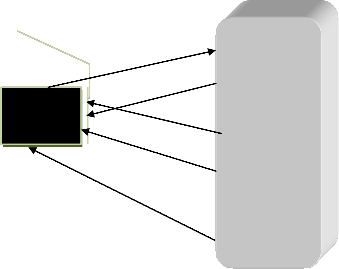
Insert AFIM
User Actor
USER
Transaction
Input
Crypto_ Biometric AFIM
No
Is AFIM AES
Pin Valid? Yes
Enroll Fingerprint
Transaction_Errors
Check for Biometric Encrption
Is Fingerprint No
Valid?
Service_outage
Yes
Select Transaction Type
Execute Selected Transaction
No
Is Transaction
Completed
Fig.3.5: User/Actor Transaction DFD in AFIM [12]
The proposed fingerprint pattern matching and verifica- tion algorithm flows is shown in Fig. 3.8. The data acquisition component is the first phase (phase 1 as presented below). The second phase comprise of the preprocessing steps. The third component employs a feature extraction algorithm to produce a feature vector whose best describe the characteristic of the fingerprint image notwithstanding the quality of the input image. The fourth component of the system generates the sub- ject fingerprint image model. The last component compares feature vectors to produce a score which indicates the degree of similarity between the test fingerprint and subject finger- print models.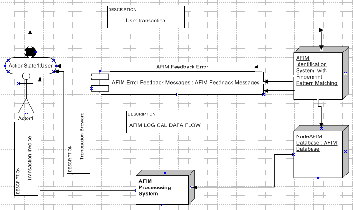
Fig.3.6: Logical DFD based on level-2 formal Method
Yes
Exit Bio-Crypt AFIM Card
Yes
End
Fig. 3.8: Algorithm flow of the proposed fingerprint verification method
In this work, the architecture of the AFIM is modeled as a real- time system. This model is a system framework that repre- sents the overall structure, components, processes, and their interrelationships and interactions. This section gives the spec- ification of the architectural model of the AFIM system denot- ed by AFIM ArchitectureST which is the high-level architec- tural framework based on the conceptual model developed in Fig. 4.1 [12]. From Fig. 4.1, the System architecture, at the top level, specify a list of structural identifiers of UDM and their relations. A UDM in context is a predefined class of the system hardware or internal control models, which can be inherited or implemented by corresponding UDM objects as specific instances in the succeeding architectural refinement processes for the system.
This work consequently models architectural component of an
AFIM with discretional access control.
Now let,
AFIM_Card represent users’ cryptographic AFIM card
AFIM_keypad represent the device input keypad
AFIM_Finger represent the AFIM finger input instance AFIM_Monitor represent the display monitor AFIM_Acct Database represents the user’s database AFIM_Billp represent the bill print out
AFIM_Clock represent the synchronization timing
We then developed the physical model in Fig. 4.1 as shown.
IJSER © 2014 http://www.ijser.org
International Journal of Scientific & Engineering Research, Volume 5, Issue 4, April-2014 759
ISSN 2229-5518
AFIM_CARD
AFIM_KEYPAD
AFIM_FINGER
AFIM_Pattern
AFIM_Frame
Where:
i0 Start
i1 Insert card
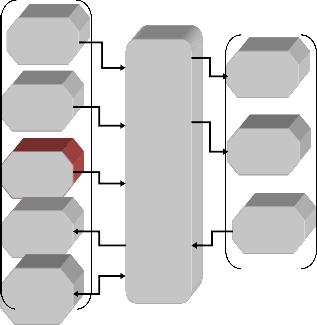
i2 Correct PIN
i3 Incorrect PIN, i4 Request ≤ max, i5 Request >max
i6 Cancel transaction i7 Sufficient funds,
i8 Insufficient funds,
i9 Sufficient bills in AFIM,
i10 Insufficient bills in AFIM, i11 Approval granted,
i12 Approval denied;
• A is the start state of the AFIM, A = a1 (Welcome);
• F is a set of ending states, F = {a1 };
• δ is the transition function of the AFIMthat determines the
next state of the FSM, si+1, on the basis of the current state
AFIM_M AFIM_CLOCK
AFIM_ACCT DATABASE
Fig.4.1: Physical model of the AFIM
From Fig. 4.1, the physical model of an AFIM is best described by a Finite State Machine (FSM), which adopts a set of states and a set of state transition functions modeled by a transition diagram or a transition table to describe the basic behaviors of the AFIM.
Given an AFIM_core with which AFIM Finite State (A, Σ, a, F, δ)
The objective function as explained in [12] would be:
Max ∑𝑁=12{𝐴𝐹𝐼𝑀} − − − − − − − − − − − − − 1.0
Where 𝐴 ≤ 𝑁
• A is a set of valid states that forms the domain of the AFIM,
A = {A0, A1……A8} where the states are:
A0AFIM_System,
A1Welcome
A2 Check PIN, A3Biometric verification, A4 Input withdraw amount, A5 Seek Approval,
A6 Verify balance, A7 Disburse bills, and A8 Eject card;
The Parameters of the existing Automated teller machine that the biometric is to be integrated upon is shown thus,
∑𝑁=12 𝐴𝐹𝐼𝑀 A set of events that the AFIM may accept and process, and
Σ = {i0 , i1 … i12 }
and a specific incoming event iv, i.e., ai+1 = δ (ai, iv), where δ = f: A × Σ → A
• Users insert AFIM, Card
• The user supplies PIN & Biometric data, seeking access
• PIN is verified and Biometric finger print is made &
passed.
• If verification fails the user has the right to retry two more
times.
• If at the third time PIN is confirmed BUT the fingerprint is
wrong then there will be a mismatch on the AFIM and
transaction is cancelled, Card ejected and AFIM is re-
turned to welcome state.
• If PIN is correct & Biometric verification passes, then the user selects transaction details
• The machine verifies if amount requested is less than available account balance
• It also verifies if there are sufficient bills in the AFIM,
• Disburse bills; eject card and return to welcome state.
This policy explains the flowchart in Fig. 3.8. The conceptual model and descriptions of an abstract FSM model of the AFIM system is presented in the next section. The biometric enroll- ment found on the figure differentiates the proposed system from the existing system in that it is not usually found in other existing systems.
The top level framework of the AFIM can be modeled by a set of architecture, static behaviors, and dynamic behaviors using the class RTPA algorithm as follows for code generation:
|| AFIM§.StaticBehaviorsPC
|| AFIM§.DynamicBehaviorsPC
Where || indicates that these three subsystems related in par- allel, and §, ST, and PC are type suffixes of system, system struc- ture, and process, respectively.
The conceptual models of AFIM as presented in Fig. 4.1
IJSER © 2014 http://www.ijser.org
International Journal of Scientific & Engineering Research, Volume 5, Issue 4, April-2014 760
ISSN 2229-5518
through 4.2, describes the configuration, basic behaviors, and logical relationships among components of the AFIM model. According to the conceptual system modeling, specification, and enumeration, the top level model of any system may be specified in a similar structure as given in equation 1.0. The following sections will extend and refine the top level frame- work of AFIM into detailed architectural models (UDM) and behavioral models.
As depicted in Fig. 4.1, a high-level specification of the archi- tecture of AFIM, ATM§.ArchitectureST, is developed in Algo- rithm II, using RTPA. In this model, the AFIM§.ArchitectureST encompasses parallel structures of a set of UDMs such as the AFIM_core: ST,
AFIM_CardReader: ST, AFIM_Keypad: ST, AFIM_Monitor: ST, AFIM_BillStorage: ST. Algorithm RTPA_II:
Architectural framework of the AFIM system {}
|| <AFIM_CardReader: ST |>
|| <AFIM_FingerPrint_Enroll: ST |>
|| <AFIM_Keypad: ST |>
|| <AFIM_Monitor: ST |>
|| <AFIM_BillStorage: ST |>
|| <AFIM_BillsDisburser: ST |>
|| <AFIM_SysClock: ST |
|| <AFIM_SysDatabase: ST |>
|| <@EventsS>
|| <StatusBL>
The set of events of AFIM are predefined global control varia- bles of the system, as given in equation 1.0, which represent an external stimulus to a system or the occurring of an internal
1. Image acquisition-which is done by the optical multispec- tral sensor.
2. Image enhancement-used to adjust the contrast of the im- age and also to remove noise.
3. Fingerprint image segmentation- this is used to extract the region of interest, which is further used for feature extrac- tion such as minutiae.
4. Matching-based on the extracted features, the verification of the given image is done with the image in the database and returns the result either as true or false.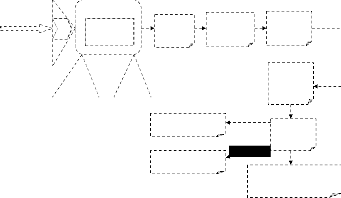
The matching result determines whether the customer can access the account or not. From Fig. x1, the fingerprint image selected undergoes a rotation which generally commutes with the Fourier transform for continuous two-dimensional signals. The ROI on the image is monitored on 0.99 thresholds. The matching processor carries out the pattern matching algorithm above. In this case, the matching of two fingerprints is done based on the features extracted from the fingerprint. The AFIM uses minutiae based matching technique, since the mi- nutiae are the most important features of fingerprint. This in- clude ridge bifurcations- ridge dividing into two and ridge terminations- abrupt end of a ridge. Before the process of mi- nutiae extraction, thinning of the segmented image is per- formed. Thinning is done, so that the ridges are only one pixel wide. After thinning, many spurious pixels may be formed, such as H-breaks and spikes. These spurs are removed using morphological operators. Its design is represented in the fol- lowing diagram of Fig. x1 which shows the basic fingerprint pattern detection/identification process while Fig. x1 shows the Pattern Matching model:
Image
Header Detector Image
change of status such as an action of users, an updating of the
environment, and a change of the value of a control variable.
ATM§.ArchitectureST.EventsST:
@SysInitialS
• | @tTM = §thh:mm:ss
• | @SysClock100msInt int
We shall present the code generation with the GUI interfaces
for the conceptual formal descriptions presented above. This
work will now present the simulation capture for AFIM pat-
tern matching identification scheme.
Acquisition
Reject user
Authenticate User
Scan Motion
Detection
Algorithm i
Recognition
Engine
Optimization
Strategy
Outcome& Action
Measure System Response &
generate a Feedback
As stated in the previous section, this paper seeks to develop a biometric pattern matching model for fingerprint images us- ing a threshold index of 0.99. The capture computer is realized with the MATLAB Simulink vision system toolbox [II]. This was used to model a 2-D normalized cross-correlation for pat- tern matching for user fingerprint inputs. The relative size of the target to the input image pattern and the pyramiding fac- tor determine which domain computation is faster. In this work, the fingerprint recognition model compares the given input image with the template fingerprint image that is stored in the database. The matching processes comprises of four steps, viz:
Fig.x1: Basic Fingerprint pattern detection/identification block diagram
Some considered design specifications for the proposed MATLAB AFIM pattern matcher implemented with the com- puter human vision toolbox in MATLAB software, includes:
i. A pre-set template is stored in the system and is called up by the input Data Acquisition System (DAS).
ii. The Digital image processor will handle only sin- gle output data type (In context, one fingerprint image)
IJSER © 2014 http://www.ijser.org
International Journal of Scientific & Engineering Research, Volume 5, Issue 4, April-2014 761
ISSN 2229-5518
iii. The Digital Signal processor used for the updat- ing schemes is the Sum Absolute difference type
iv. The image block sizes are vectors [60,80]
v. The Threshold index is set at 0.99
vi. The detection block is zero crossing.
vii. The correlation pattern matching is 2-dimentioanl
only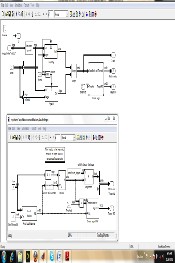
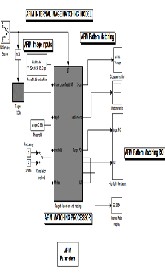
MATLAB Simulink AFIM Matching Processor Schematic Capture with matching processor subsystem
The match metric window shows the variation of the target match metrics. The model determines that the target template is present in a video frame when the match metric exceeds a threshold (cyan line). The Cross-correlation window shows the result of cross-correlating the target template with a video frame. Large values in this window correspond to the loca- tions of the targets in the input image. The Overlay window shows the locations of the targets by highlighting them with rectangular regions of interest (ROIs). These ROIs are present only when the targets are detected in the video frame.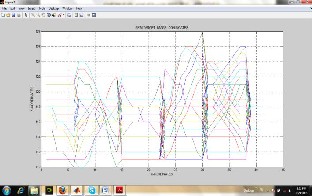
AFIM fingerprint image coordinates for Region of Interest
descriptive specification of AFIM is presented. A pattern matching model with MATLAB Simulink was realized while outlining the matching processes and procedures. The region of interest in our pattern matching model shows the most es- sential target of any biometric detection system. At 0.99, an excellent threshold index is observed. In the AFIM model, even if a user password pin ID is hacked, the model with the exact reference fingerprint allows only a valid finger image for the password ID. The proposed AFIM model offers better functionality and performance compared with other crypto- graphic and bio cryptosystem, but will be compared with bi- ometric fuzzy faults model in our future work. Also the GUI results will be presented in our subsequent research works.
[1] Sowmya.R., Sandhya, B.Thamotharan, S.Ramakrishnan, “ A New Business Model For ATM Transaction Security Us- ing Fingerprint Recognition, International Journal of En- gineering and Technology (IJET), Vol 5 No 3 Jun-Jul 2013, pp. 2041-2047.
[2] Navneet Sharma, Vijay Singh Rathore, “Different Data Encryption Methods Used in Secure Auto Teller Machine Transactions”, International Journal of Engineering and Advanced Technology (IJEAT) ISSN: 2249 – 8958, Vol- ume-1, Issue-4, April 2012 pp.175-176.
[3] Ibidapo, O. Akinyemi, Zaccheous O. Omogbadegun, and Olufemi M. Oyelami, “Towards Designing a Biometric Measure for Enhancing ATM Security in Nigeria E- Banking System. International Journal of Electrical & Computer Sciences IJECS-IJENS Vol: 10, No.6.
[4] Divya Singh, Pratima Kushwaha, Priyanka Choubey, Ab- hishek Vaish*, and Utkarsh Goel, “A Proposed Frame- work to Prevent Financial Fraud through ATM Card Cloning” Proceedings of the World Congress on Engineer- ing 2011 Vol I, WCE 2011, July 6 - 8, 2011, London, U.K.
[5] N.Selvaraju, G.Sekar, “A Method to Improve the Security Level of ATM Banking Systems Using AES Algorithm” In- ternational Journal of Computer Applications (0975 –
8887) Volume 3 – No.6, June 2010.
[6] Vasumathi.A , Dhanavanthan P, “Application of Simula-
tion Technique in Queuing Model for ATM Facility” In-
ternational Journal Of Applied Engineering Research,
Dindigul, Volume 1, No 3, 2010. Pp.469-482.
[7] R.W.Butler (2001-08-06). "What is Formal Methods?". Re-
trieved 2006-11-16.
[8] C. Michael Holloway. Why Engineers Should Consider For-
mal Methods. 16th Digital Avionics Systems Conference
(27–30 October 1997). Retrieved 2006-11-16.
[9] http://en.wikipedia.org/formal development
[10] Yingxu Wang, “The Formal Design Model of an Automat-
ic Teller Machine (ATM)
[11] www.MathWorks, Inc., 7.12 (2011b)
[12] Obinna et al. “An Enhanced Technique in ATM Risk Re-
duction Using Automated Biometrics Fingerprint in Nigeria”.
Accepted for publication in International Journal of Science
and Engineering.
This paper has presented a conceptual formal modeling framework for a proposed AFIM. Data flow diagrams and
IJSER © 2014 http://www.ijser.org